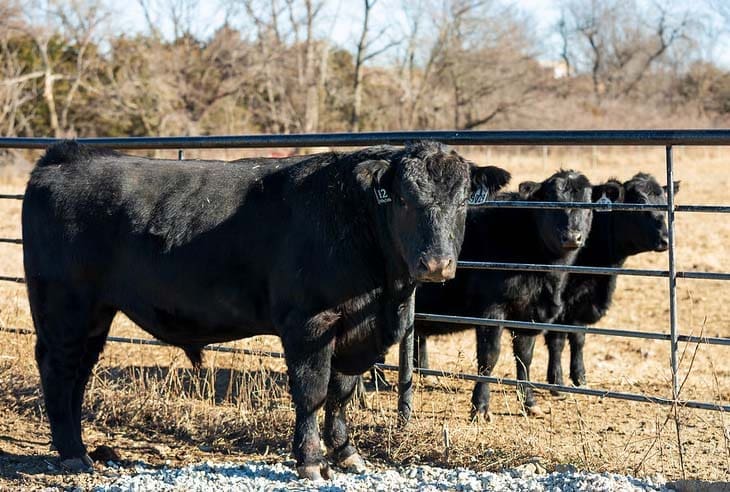By Lisa Moser, K-State Research and Extension news service
Manhattan, KS — Every carpenter knows that having the right tool for the job allows the finished project to be the best it can be, and part of the decision about which tool to use comes with an understanding of how it can assist in the task at hand.
In much the same way, a basic understanding of trait heritability and data accuracy can aid the beef cattle producer in selecting the right bull to best match the needs of the herd, said K-State beef cattle geneticist Megan Rolf on a recent Cattle Chat podcast.
Speaking with the other experts at the Beef Cattle Institute, Rolf talked about the differences in the heritability of cattle traits (how traits are passed down from one generation to the next).
“There are differences among the heritability of traits, and it is helpful to understand those as we make a plan for how to manage the herd,” Rolf said.
Traits that are highly heritable are carcass traits and structure, according to Rolf. She categorized traits that are moderately heritable as growth traits, such as weaning weights. The traits with low heritability include fertility and longevity, she said.
“Knowing the trait heritability will give us a better understanding about how easy it will be to make genetic change,” Rolf said. “Even with a trait that is lowly heritable, we still can make selection progress.”
In the case of fertility, Rolf said that along with using the selection tools, it is also important to manage the cows in a way that favors cattle health.
“We are able to improve fertility by focusing on caring for the cattle in a healthy environment and meeting their nutritional needs appropriately,” Rolf said.
Rolf also added that the beef industry has made progress in improving fertility when producers use Expected Progeny Difference (EPD) calculations in their selection decisions.
She said, “EPDs contain all the information we have about that individual’s genetic merit that is properly weighted based on its source, whether that is individual records or a genomic test.”
She has also seen trends change following the incorporation of EPDs by the beef breed associations.
“If you look at genetic trends over time, as soon as producers decided to put some emphasis on heifer pregnancy through EPDs, there was an improvement in that trait,” Rolf said.
She adds that EPD accuracy is another important factor to weigh in selecting bulls.
“EPD accuracy is the best risk management tool we have from a genetic standpoint,” Rolf said. “The accuracy number tells us how much genetic information goes into that prediction.”
She said that sires used in artificial insemination (A.I.) programs will tend to have higher accuracy numbers because of the volume of offspring that are included in that calculation.
“If you have a trait that is critical, then it is worth considering using an A.I. sire, but we do have a tool that can increase the accuracy of the yearling herd sires: genomic testing,” Rolf said.
She explained that the genomic test is performed by using a DNA sample from the individual.
“When the genomic test is factored into the EPD calculation, it will increase the accuracy and should give breeders more confidence in that EPD prediction,” Rolf said.
Another tip for balancing trait distribution, according to Rolf: “One way we can balance the risk of EPDs changing over time is to use multiple sires in the herd.”
To hear the full discussion, listen to the Cattle Chat podcast online or through your preferred streaming platform.













